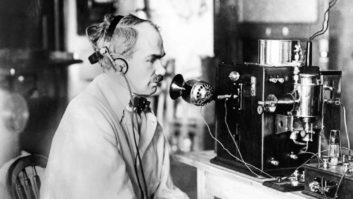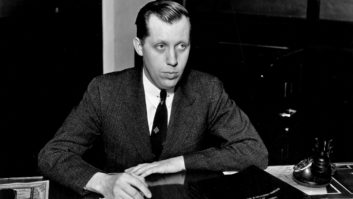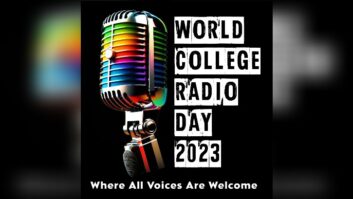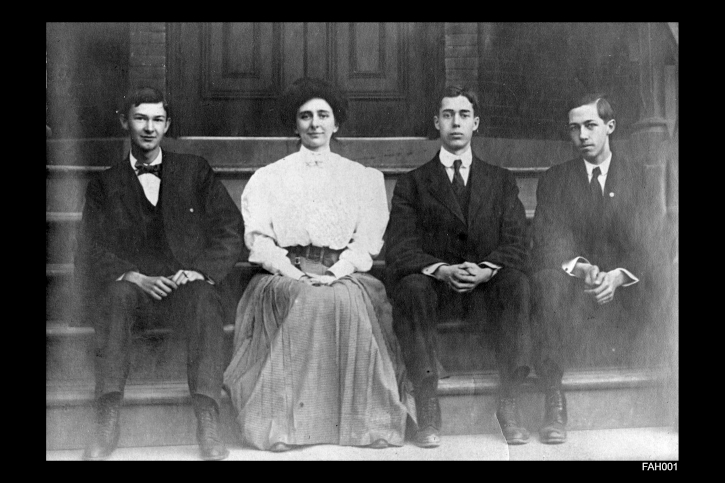
In recognition of Women’s History Month, Radio World republishes this story by our popular history author James O’Neal, which originally appeared in 2010.
The unexpected sometimes happens during a research effort. This was true in my quest to determine the truth about the fabled 1906 Fessenden Christmas Eve “first broadcast,” which is well known to Radio World readers.
In doing that research I learned about a cluster of young people — teenagers — who lived in a Brooklyn, N.Y., neighborhood, shared a strong interest in radio and eventually made careers of it.
They were all born around 1890, and as such, were the first generation of young people exposed to radio — the first true geeks or techno nerds. As radio was a hot item, and poorly understood by the average person, radio experimenters frequently provided grist for newspaper reporters.
One New York paper referred to the Brooklyn radio kids as “smart boys” and reported on their activities. One of these was Francis (Frank) Hart who, in 1906, began keeping a sort of radio log/diary. Hart and the remarkable perspective that his journal provided about early radio were mentioned in my articles writings about the “world’s first broadcast.”
Nowadays, it’s difficult to imagine not having instant 24/7 communications, or electric lights that work every time the switch is touched. Yet, 100 years ago, even in the largest cities, telephone service was a rather mysterious thing, subscribed to only by the rich; many electric power companies provided power only during the evening hours and shut down during thunderstorms.
High school science classes shied away from the teaching of subjects such as electricity, wireless, x-rays, flying machines and similar wonders. These inventions were too new, and most educators had little or no grasp of such technologies.
So where did the young people of that era turn to satisfy their hunger for knowledge in such areas?
Certainly, there were public libraries, but in the early 20th century, these weren’t universal, and — just as today — had to balance the reading interests of their clientele with resources available, meaning that the overwhelming majority of books were popular fiction rather than scientific treatises.
Magazines in the area of electricity and wireless were scarce — the first title printed in this country that catered to radio experimenters didn’t appear until 1908.
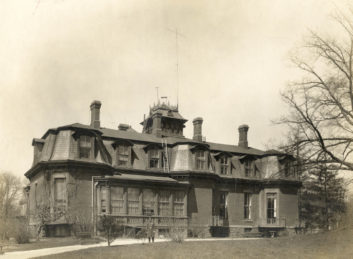
Filling an Educational Void
Its mission was “to actively engage children in educational and entertaining experiences through innovation and excellence in exhibitions, programs, and use of its collection.”
Hart and his peers were in their early teens when the museum opened. It’s not known if they became “regulars” immediately after opening day, but it’s likely this happened with the arrival of a recent college graduate trained in the sciences, someone who would have a great influence on the lives of Hart and his friends, many who went on to successful careers in radio engineering.
Unusual for the times, their mentor was a woman.
It was not uncommon for women to work in the field of telegraphy or telephony. In fact, they were chosen over men for staffing telephone switchboards, based on perceptions about demeanor and temperament.
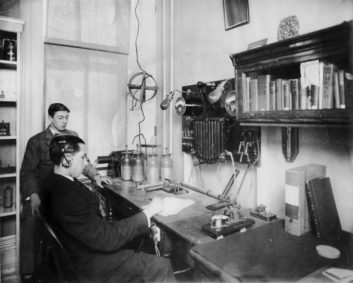
However, radio in the early 1900s was very much “a man’s world.” It involved working with lethal voltages, physically large and heavy apparatus and the climbing of high masts — something women “just didn’t do” then. (Lee de Forest’s 1907 marriage to Nora Blatch wound up in the divorce courts because she persisted in her career as an engineer after their nuptials.)
Such stigmas notwithstanding, Mary Day Lee arrived at the Brooklyn Children’s Museum on Oct. 3, 1905, and began a nearly two-decade-long career in instructing boys and girls about the wonders of electricity, radio and the physical world around them.
Her arrival was heralded with a small note in the organization’s Museum News:
ANNOUNCEMENT: It gives us pleasure to announce the appointment of Miss Mary Day Lee, of New Rochelle, New York, to the position of First Assistant in the Children’s Museum. Miss Lee is a graduate of Barnard College and of the Teacher’s College, New York, where she gave special attention to physics and chemistry. Her work at the Museum will include popular lectures on these subjects and she will be glad to meet any boys and girls who are interested in physical and electrical apparatus and experiments.
Census records indicate that Mary Day Lee was born in Richmond, Va., but the surviving records are ambiguous as to her exact date of birth. College records give it as April 21, 1879. The circumstances of her family’s move to New York City are vague. College records indicate that she graduated from Barnard in 1905, making her about 26 years old at the time of her museum appointment.
Lee was soon to become a pivotal figure in the museum’s operations and in early radio itself. During her tenure, she also would serve as the mentor to young people interested in the physical sciences.
Popularizing Radio in Brooklyn
Lee wasted little time in bringing one marvel of electricity to neighborhood children: a wired telegraph system, which gradually spread out to interconnect the museum with the homes of the young people that she worked with. Within a few months, this wired telegraph system morphed into a full-blown “wireless” station.
The beginnings of that radio station are recorded in the Museum News in spring of 1906, in an article titled “Our Wireless Telegraph”:
“The wireless telegraph receiver is now in good working order and hardly a day passes in which we do not hear messages from some of the stations in the vicinity, or some of the vessels outside the harbor.”
Although the article carries no author’s name, clearly it was penned by Lee. Further in the account is a detailed description of how to make detectors for radio waves and of the construction of a spark type of radio transmitter.
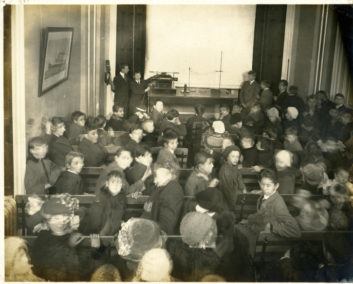
The museum’s radio room — collocated with Lee’s office — soon became one of the most popular attractions at that institution:
“The number of devotees of ‘wireless’ grows steadily, and each week brings one or two more High School boys who wish to investigate the subject seriously and to persevere until they make a transmitter and receiver that will work.
“More than fifty boys from high schools and colleges have come expressly to see the instrument and about ten boys come regularly two or three times a week to experiment on some part of the apparatus.”
Other evidence of her accomplishments is found in an undated newspaper clipping, probably from the Brooklyn Eagle during her first year at the museum. Its gist is that by acquiring radio skills, a person could eavesdrop on commercial and naval communication traffic; but the article also establishes that Lee had sufficient mastery of both the Morse code and radio apparatus to teach these skills:
Of course there is considerable intelligence required before the wireless wiretapping is a success. Worst of all the wireless people talk in Morse code, like any other telegraphers, and before you can understand the dots and dashes … it is necessary to learn that code. Right here is where the Children’s Museum in Bedford Park, Brooklyn, comes into the story.
That unique institution, which is one of Brooklyn’s greatest claims to fame, as everybody knows, runs a set of miscellaneous lectures and courses for the instruction of children, in addition to exhibiting the armadillo, flamingo, cassowary and other stuffed animals for their edification. The curator is Miss Gallop and her assistant is Miss Lee. It is Miss Lee who has taught the boys physics and incidentally wireless [author ’s emphasis].
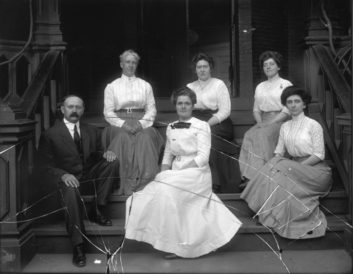
The wireless work was a result of the elementary course in physics which Miss Lee gives. The boys became very much interested in electricity, and especially in wireless telegraphy, and were soon constructing stations of their own.
The wireless station constructed and operated under the auspices of Lee was state of the art, employing a large induction coil for the generation of the thousands of volts of electricity needed for spark transmissions, and also a mechanical interrupter to drive the coil. The power supplied to the museum at the time came from an “Edison” power plant and was delivered as DC.
If Lee had accomplished nothing else during her lifetime, the construction and operation of one of the few pre-World War radio stations should be enough to put her in the record books.
Lee obviously took pride in the pioneer radio station she helped create, reporting in May of 1906 that it was undergoing “many improvements” and that “we soon expect to have the most powerful amateur station in this part of the country.
“We can receive without difficulty all the messages sent from stations within a radius of fifty miles, and sometimes we can hear Philadelphia,” she wrote in the Museum News. “Some of the boys have heard messages from Rockland, Maine, and Cape Hatteras, distances respectively of three hundred and four hundred miles. Unfortunately we cannot transmit as far as we can receive, but when we increase the height of the pole we hope to signal 25 or 30 miles.”
Behind the Mic
One of the “regulars” at the museum station was Frank Hart, who, concurrent with the establishment of the station, constructed a wireless station of his own in his bedroom. Hart is credited with assisting in the installation of the museum’s station — in particular, the erection of its large long-wire antenna, one end of which was anchored 85 feet above the building.
In addition to his logbook/diary, Hart kept a scrapbook documenting some of his accomplishments. One item is a newspaper clipping that describes his radio activities and apparatus. Although the date and newspaper name are missing, the story appears to have been printed in mid-1907, just a few months after Lee de Forest started his broadcasting activities in New York City.
What’s significant is that the clipping indicates young Hart was experimenting with something few others had tried: the transmission of speech via radio waves. And although this is speculative at best, the article lends some support in making a case for Lee to have been one of the first women — possibly even the first woman — to have her voice transmitted by radio.
Boy Holds Key to Wireless
There is a school boy, Frank Hart Irving [sic], at 942 St. Mark’s avenue, who though only sixteen years old, sat in his bedroom and by means of the perfect wireless telegraph instrument that he had made himself, followed the movement of every vessel in the fleet until it had reached Virgin Pass, and received every message sent out, even … official dispatches … which were intended only for official ears.
Frank has within the last two months constructed an electric arc and connected it with his wireless instruments, so that he may converse eight blocks away with a friend. It is an odd sight to see this boy stand in his bedroom, one wall of which is covered with telegraphic and electrical apparatus, and by playing the blaze from a Bensen [sic] burner on an arc light that he has rigged up, talk with a friend a quarter of a mile away without the use of wires …
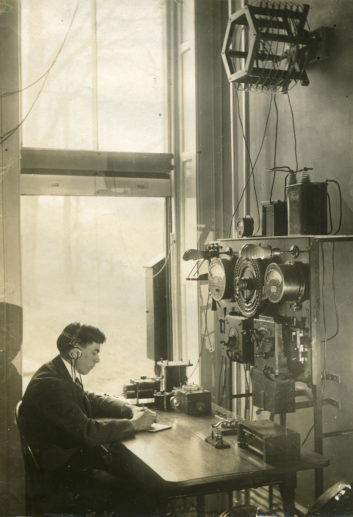
What the reporter is describing is one variant of an early AM radio transmitter — known in some circles as an “arc phone.” (The Bunsen Burner mentioned supplied hydrocarbons needed to stabilize the arc.)
Such a device was fully capable of transmitting speech and music, and it was this technology that de Forest used in his early broadcasting experiments.
Hart was born on Aug. 12, 1891, making him 16 — the age indicated in the article — in 1907. He logged the first reception of de Forest’s speech transmissions on March 20 of that year. Therefore, we may assume he constructed his AM transmitter sometime in the spring or summer of 1907.
Hart made no entries in his journal about how this primitive radiotelephone transmitter came into being, but two scenarios are likely, and directly or indirectly involve Hart’s mentor and advisor, Mary Day Lee.
The first suggests that Hart approached her for information on construction of an arc transmitter. She certainly would have had the knowledge and skills to guide him in building such a device. Before he took it to his home, a period of testing and experimentation at the museum would have followed, providing her with access to this radiotelephone transmitter.
In a second scenario, Hart could have constructed the transmitter on his own. However, as a precocious teen, he likely would have been proud of his accomplishment and not hesitated in demonstrating this new “wonder” to Lee. Given her scientific curiosity, it’s almost certain that she would have tried it out herself.
In either case, Lee would have had the opportunity to experiment with the radiotelephone transmitter, and in doing so, could easily been the first female to have uttered words wirelessly across space — technically “broadcasting” to anyone within range.
The audience might have included other radio amateurs, as well as land-based or seagoing commercial station operators tuned to the proper wavelength, and possibly even the operators at the Brooklyn Navy Yard, who at that time were just getting used to de Forest’s frequent experimentation with speech and music transmissions.
I have no proof that Lee actually transmitted her voice via Hart’s machine. But I consider the likelihood high, given the availability of the transmitter and the timing. (See box at the end.)
Ms. Lee did not leapfrog into broadcasting as we know it; that business didn’t begin until the early 1920s. She remained in Brooklyn as a lecturer, teacher and mentor to museum neighborhood young people, continuing to operate and improve the wireless station there.
Both the world and radio were changing in the decade of the 1910s. The first U.S. radio laws were enacted in 1910, and two years later even stronger laws were passed governing radio station operations and apparatus. (See my June 3, 2009 article “When the Federal Government Stepped In”). The sinking of the Titanic also did much to create public awareness of the power of radio.
Mary Day Lee continued her work in educating young people about this increasingly valuable tool, and also continued to shatter “glass ceilings,” as she became — in 1917 — the first woman in New York City to be licensed to operate motion picture projection equipment. This was another “man’s world,” as it involved high-current electrical arc light sources, and the handling of extremely flammable and potentially explosive nitrate-based film.
The Great War
The entry in 1917 of the United States into the World War affected not only the museum’s radio activities, but also those of most other radio operations, amateur or commercial. On April 7, and by order of the president, all private stations were shut down or taken over by the government for its own use. This spelled an end to the wireless activities at the museum.
Lee noted the demise of the station in a house publication, the Children’s Museum News:
“[T]he Museum Wireless Telegraph Station was dismantled on April 9th. The wireless pole and all of the apparatus used in sending and receiving messages were removed.”
“While boys cannot hope to send or receive messages until after the war is over, the privilege of learning the wireless code and of practicing it on Museum instruments will be extended to beginners as heretofore.”
That publication also provided a partial listing of the young men — all trained in wireless by Ms. Lee — who by then had entered military service and were working in some aspect of wireless communications in the defense of their country.
Some of her former students kept Lee informed of their activities “overseas” as much as possible:
“Austen Curtis; the first boy who studied Wireless Telegraphy in the Children’s Museum announced in his last letter, dated at Paris, that he had been promoted to the rank of captain in the Radio Corps of the United States Army.”
Leaving the Museum
Although no formal mention of a wedding has been located, apparently Lee was married to Henry B. Weisse in, or sometime prior to, 1917. A New York museum association conference roster that year recorded “Mrs. Mary Day Lee Weisse” as an attendee.
Little is known about her husband; however census records indicate that he was a stockbroker and the couple lived in Queens along with her sister Florence and their father, Richard Lee.
A 1923 article chronicles the end of her tenure at the museum:
“The sudden resignation and departure of Miss Mary Day Lee early in February brought disappointment and regret to her many friends. For seventeen years, thousands of young people delighted in her lectures, and with her personal assistance many a troubled high school student solved his knotty problems in elementary physics and electricity. Under her direction for more than a decade there flourished an amateur wireless telegraph station where every eager inquirer into the mysteries of ‘Wireless’ found satisfaction. Full-fledged wireless operators, made during their recreation hours, emerged from this station at different times. Several of these gave noble service to their country during the World War; some in the quiet research of technical laboratories, others in wireless stations of ships at sea, and others amid the dangers of the trenches and dugouts of the battlefields of France maintaining what was of supreme importance, unbroken wireless communications.”
“We wish her all happiness in her new home at White Plains, New York, which is too far from Brooklyn to permit of her remaining longer in the museum.”
As far as can be determined, Lee Weisse was never directly associated with radio or broadcasting again, though the 1930 census showed that her sister, who still shared the couple’s dwelling, was employed in radio advertising.
In 1949, Lee Weisse received a small bit of recognition in connection with the post-war launch of television. That year, the Brooklyn Eagle published a story recognizing the accomplishments of one of her protégés, Lloyd Espenschied. He had enjoyed a long career at Bell Laboratories, and was being recognized as the co-inventor of coaxial cable, an essential commodity in television. Espenschied stated in the article that he and other Brooklyn youth had received early encouragement in their radio careers from both Lee and her supervisor, Anna B. Gallup.
Also mentioned were Austin Curtis and Frank Hart. Curtis had become a Bell Labs engineer too, and with Espenschied he participated in the world’s first long-distance test of radiotelephony in 1915. Hart was recognized as having served as the manager of a large trans-Atlantic shortwave communications station on Long Island.
Lee also was remembered by Alfred P. Morgan (1889–1972), who was in the same age group as Espenschied, Curtis and Hart. Morgan went on to author more than 50 books, popularizing the sciences for young people. Morgan recalled his association with Lee in the 1963 book “More Junior Authors”:
“I visited the Children’s Museum in Brooklyn, where an unusual young woman, Miss Mary Day Lee, a member of the Museum staff, not only encouraged boys to experiment with electricity and wireless telegraphy, but was able to aid and assist them. My hat is still off to the young woman who could discuss with you the fine points of winding a spark coil.”
Later Years
Lee Weisse and her husband spent the remainder of their lives in White Plains. After her relocation to this New York City bedroom community, she began a second career as a public school teacher, educating young people in science and biology. None of the records examined indicates that any children were born to the couple.
Mary Day Lee Weisse’s husband, Henry, died in late 1964 at the age of 87. She passed away on April 17, 1970 at the age of 90.
Postscript
The White Plains Rural Cemetery tombstone indicates that Mary Day Lee maintained her identity even after her marriage to Henry Weisse.
After Mary Day Lee Weisse left the Brooklyn Children’s Museum, little was written or otherwise recorded about her; I found it difficult even to determine when she’d died.
Census records are available only to 1930, at which time she would have been 70. Telephone books and city directories were of limited use, but did indicate that she was alive when 1970 editions were published.
My wife, Pamela, who grew up near White Plains, N.Y., suggested a visit to area cemeteries. Ultimately, we located Ms. Lee Weisse’ resting place and established her death date.
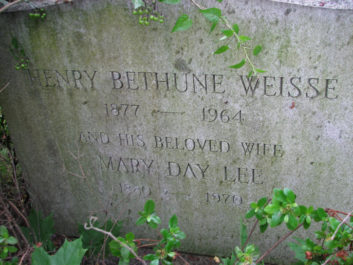
She and her husband, Henry, are interred at the White Plains Rural Cemetery, which was established in 1795 and is only a short distance from their last home. However, even finding the couple’s gravesite proved a challenge. The cemetery’s keeper provided a map and general coordinates, but no visible grave marker was evident. It was only after pulling aside a large bush that we found the marker; even in death, Mary Day Lee Weisse remained elusive.
Judging by the size of the bush, we may have been the first to visit her grave since she was laid to rest 40 years ago. I note this only as a way of indicating how this person, a true pioneer and very much ahead of her time, has been all but forgotten. It is my hope that through this published account of her life and career, her memory will be kept alive and her deeds remembered. She was a remarkable person.
|
The original version of this article appeared in Radio World in 2010.
The author thanks the following for help in preparation of this article: Pamela A. O’Neal; Jane Johnson, Mecklenburg County (N.C.) Public Library; Beth Alberty, Brooklyn Children’s Museum; Anne-Rhea Smith, Brooklyn Children’s Museum; Miriam Berg Varian, White Plains, N.Y. Public Library; and Harold Mercer, Jr., White Plains (N.Y.) Rural Cemetery.





